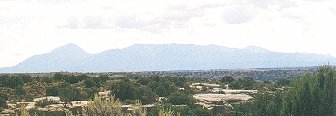Hovenweep
Four Corners Region

Hovenweep
Four Corners Region

The Anasazi, ancestors of today's Pueblo Indians, occupied the canyons of Hovenweep 900 years ago. For centuries these people had lived in small scattered villages but early in the 1100's, extensive droughts in the San Juan Basin drove them into concentrated settlements. They were excellent dry land farmers, and under constant pressure to clear the mesas of trees for fuel as well as to create space for crops. The rains would wash the soils away and they could move on, but when the long droughts came, it became impossible to survive in the traditional way. They abandoned their fields and dwellings on the open plains and mesa tops to cluster together near the permanent springs located at the heads of these canyons. Within two hundred years, crop failure, and shortages of wood forced them to abandon Hovenweep. The place was desolate before 1300. Some suggest the threat of ambush and attack style warfare as a possibile cause behind the construction of the towers and the abandonment of the pueblo, but there are no burnt towers or mass graves to support this.
The Square Tower has been is interpreted as a defensive watch tower, supporting the theory that things were not always peaceful at Hovenweep and that as water became scarce there was an increasing need for vigilance. Other researchers have found astronomical alignments built into some other towers which suggest they were used as observatories to determine the time of solstices. This was crucial in figuring when to plant as well as when to plan for an important ceremonial occasion. Often, a point on a distant horizon marking where the sun would rise or set at certain times of year was used in determining these events, but in the area around Hovenweep, much of the horizon is relatively featureless. When feasible, this could be remedied with the building of a cairn on the horizon. On specific days, runners would be sent to travel directly to these locations, as a beam of sun does, carrying prayer feathers and offerings of corn pollen. At Hovenweep, the lack of any clear referents on the horizon led to the use of towers which were designed with celestial alignments so that on the day of the solstice, a beam of sun would shine through a crack in the outer wall onto a mark fixed on an interior wall.

Raven taking leave of the Ruins
Hovenweep is a Ute Indian word meaning 'deserted valley'

Sleeping Ute Mountain
According to legend, Sleeping Ute Mountain was a Great Warrior God in ancient times. He fought monsters and the Evil Ones who troubled the people. The Evil Ones mustered their forces and braced themselves. When their feet pushed into the earth, they created the surrounding mountains and valleys. In the course of the struggle, the Great Warrior was hurt and lay down to rest while he healed. His blanket colors still change with the seasons, so the people know he is only in a deep sleep; the blood from his wound turned into clear water for all creatures to drink. When he rises, he will put an end to all the white man's injustice. The cities will be abandoned and crumble, becoming great ruins where young people will go to wander and ponder the spirit of the men who once lived there. The four-leggeds will return. The great forests will come back. The air and waters will be pure again, as they were in the beginning. Turtle Island will be given back to the original people.
turtle hill ©2000